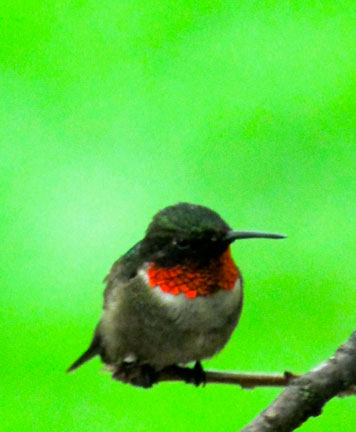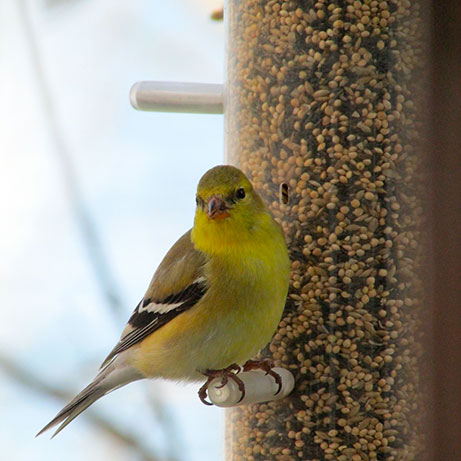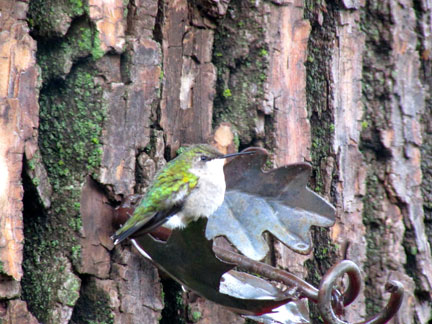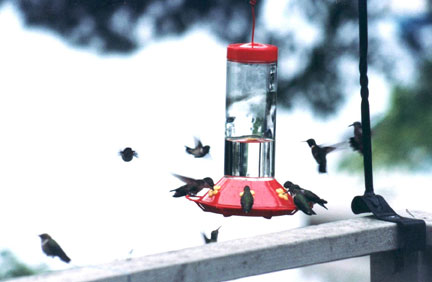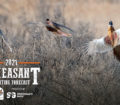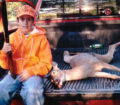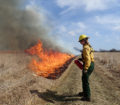By Darial Weisman
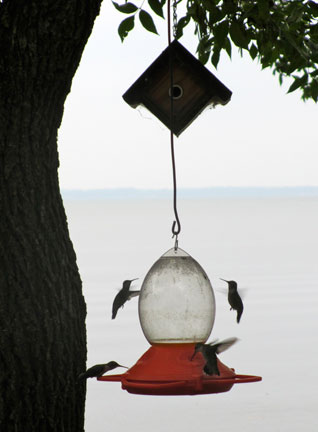 This is the time of the year that backyard bird lovers really get excited. The migration is now complete, and our songbirds are all in the process of nesting. It is hard to believe, but in a few short weeks young-of-the-year family members will be leaving the nest!
This is the time of the year that backyard bird lovers really get excited. The migration is now complete, and our songbirds are all in the process of nesting. It is hard to believe, but in a few short weeks young-of-the-year family members will be leaving the nest!
One of the fun things that my husband and I like to do is attract songbirds to our backyard. Those in big and small yards alike can enjoy this pleasurable pastime. It just takes a few properly planted shrubs, a few trees and maybe a flower garden or two, and you have the makings for a songbird backyard. Of course, if you are fortunate enough to be in a wooded neighborhood or next to a lot of trees, you are set.
For the next several articles, I will discuss how to attract various types of songbirds. This time let’s talk about attracting hummingbirds. First off, you can find a wide range of hummingbird feeders at your local bird store or greenhouse. They are all built to hold nectar in the bottom of the feeder for the hummingbirds to stop in for a quick bite! It’s simply amazing watching them flit in and out, in and out.
You will probably want to start with one or maybe two feeders. We have two feeders and have put one at the back and one at the front of the house. We do this because when you start to get multiple hummingbirds coming to the feeder, they will chase each other off – so two feeders helps to spread them out a bit.
One of our feeders has a hook that we put over a hanger set near one of our windows for easy viewing. It’s close enough that we can capture all of their antics, even to the point of being able to see that long, threadlike tongue slip in and out of the feeding portal. The second one has suction cups that attach to the window and it is more of a platform feeder.
Nectar
The best part about hummingbird food is that the nectar is extremely easy to make and store. It’s a homemade recipe, and I definitely believe that hummingbirds prefer it to the store bought mixes. Here is the recipe:
- 1 part sugar
- 4 parts water
- Boil the sugar water until the sugar dissolves and the water is clear (usually takes 1-2 minutes).
- Cool and store in the refrigerator if you are going to use it that week (if the mixture becomes cloudy, do not feed it).
- Freeze it in containers for later use – this is a great way to always have sugar water (nectar) on hand. When you are ready for more nectar, simply remove the container from the freezer, allow the mixture to thaw out and then pour it into the feeder.
Keep things clean
This is really important. The hummingbird feeders need to be cleaned. In the spring and the fall, you can go longer, but when it’s warm, I suggest cleaning the feeders at least twice a week, and even more often if necessary. One way to tell is that the nectar is becoming cloudy. If you wait too long, you can have mold. Definitely a no-no for the hummingbirds! Personally, I don’t fill my feeders full, because it’s difficult for the hummingbirds to use up all of the nectar before it’s time to change the nectar and clean the feeders.
As the summer wears on, flies and ants can really cause a mess. If you get flies and ants in the nectar, the hummingbirds will not come to the feeder. Our feeders have bee guards on them to prevent problems with bees coming to the feeders.
A good rule of thumb is to clean the feeders each time you change the nectar. When you clean the hummingbird feeder, never use soap! Good hot water and a little vinegar will make everything clean for the next nectar fill.
Extra persuasion
If you want to add a little extra enticement, put out some red tubular flowers like cardinal flowers, petunias, etc. Our daughter and son-in-law had a trumpet vine in the back of their yard, and that really brought in the hummingbirds.
Fall migration
Fall is a wonderful time to witness all of the antics of the hummingbirds as they migrate south. They begin in September and even in late October we have had stragglers come through. At the peak, we have found hummingbirds coming in bunches-almost like flocks. In the fall, they will actually sit on the perch a little longer. For extra measure, nothing beats a curious hummingbird hovering right in front of you. You can just hear the whir of their little wings!
Easy reading
If you become fascinated with hummingbirds like I have, then you must read this story: A Hummingbird in My House: The Story of Squeak by Arnette Heidcamp. It’s the delightful, true story of a young ruby-throated hummingbird that becomes part of a person’s home and life. Plus, Heidcamp gives lots and lots of good information about hummingbirds. Written in 1991, it’s pretty much a timeless book, one that is still enjoyable over two decades later.
Editor’s Note: The author is a Master Gardener and has been an avid bird watching enthusiast for the past three decades. In each issue of the Northwest Iowa Outdoors, her column entitled “Out the Back Door” will offer songbird and backyard tips for getting the most pleasure from your outdoor space.
